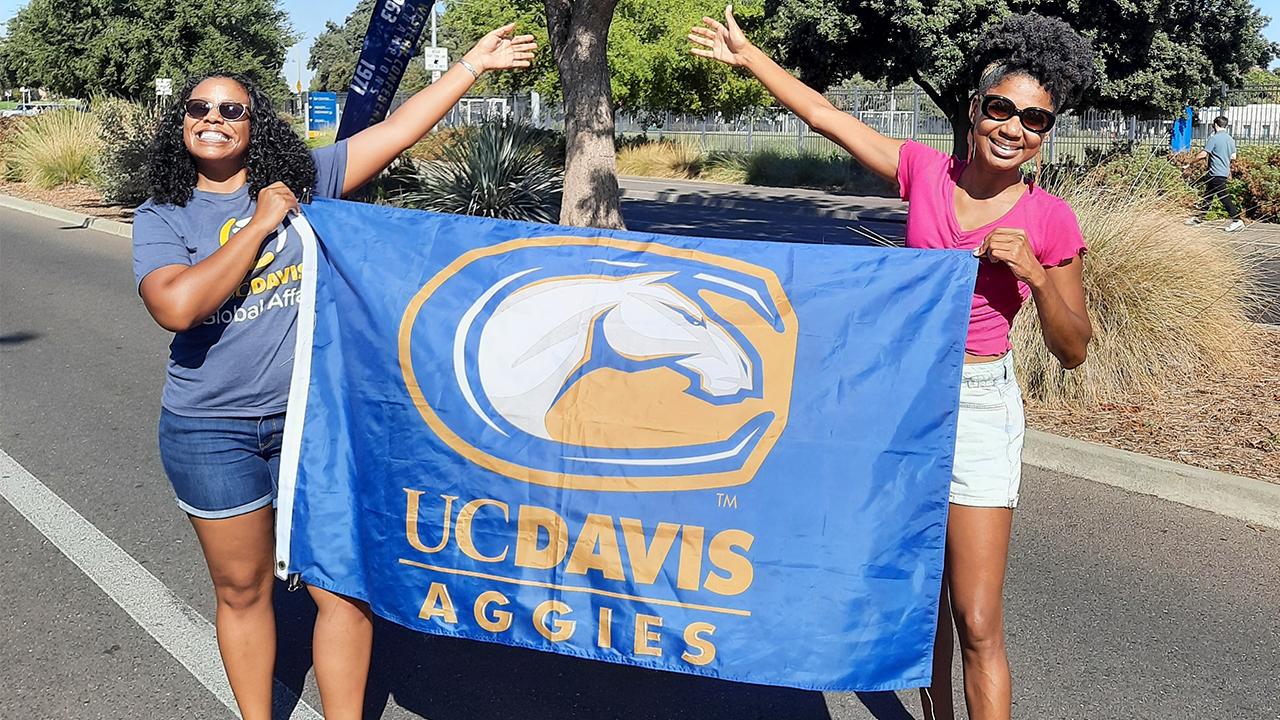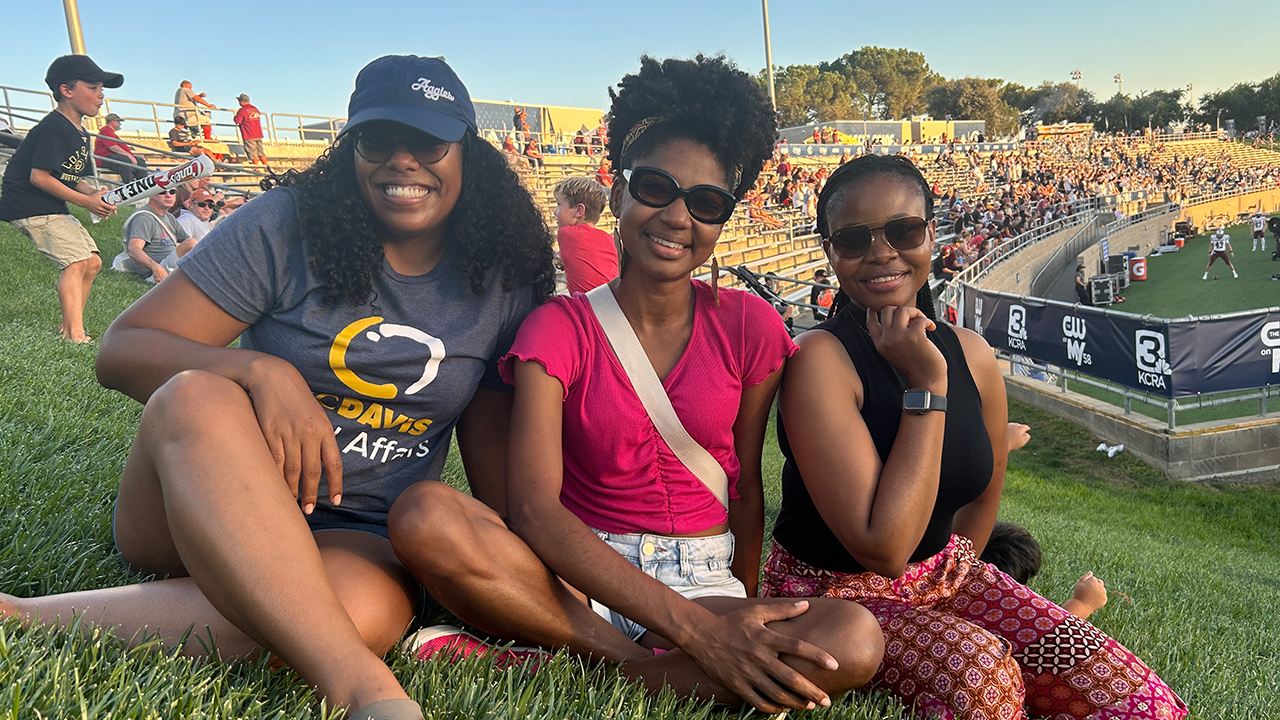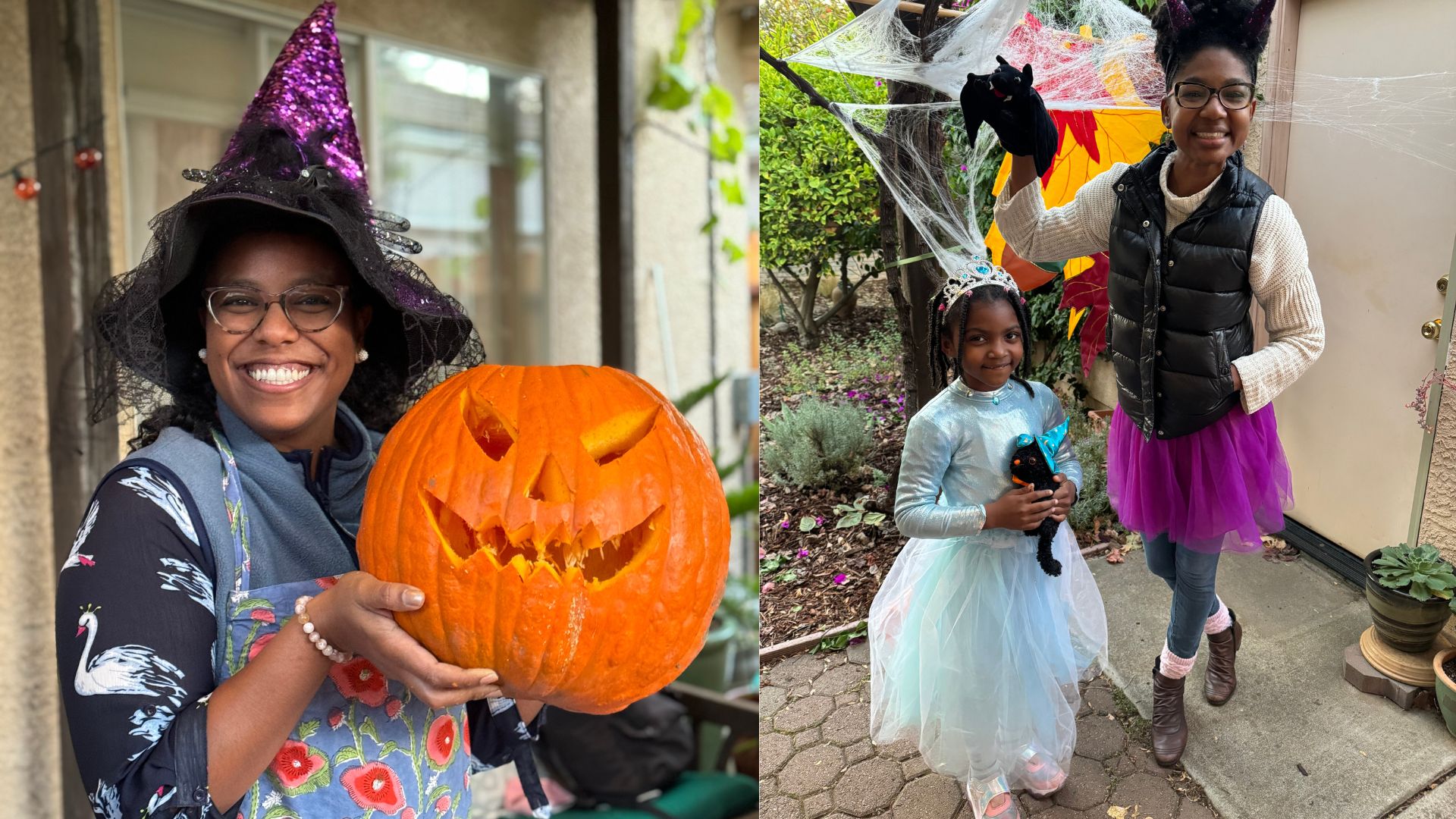
Discovering American Culture
Favorite Moments During Our Humphrey Fellowship
Rosani Matoso Silva from Brazil and Kara Roopsingh from Trinidad and Tobago are experiencing American culture for the first time as Humphrey Fellows in the 2023-24 cohort. Fellows are encouraged to enjoy activities outside of the program, and those activities often introduce them to American traditions or cultural events. Rosani and Kara wrote about two of their favorites from their Humphrey Fellowship experience.
Tailgating for first-timers:
What do the Humphrey Fellows of Brazil and Trinidad and Tobago have in common? Well, neither of us has experienced tailgating or an American football game! New cultural activities can either be thrilling, scary, fun or can evoke a wide range of emotions. The sports culture in the USA is undoubtedly different from many countries.
Kara:
On one ordinary Saturday, we were invited to join in the tradition of “tailgating” before a UC Davis football game. As a Caribbean woman from Trinidad and Tobago, Kara knows that any activity involving food, drinks, and music, means a good time. And this activity didn’t disappoint! Back home in Trinidad and Tobago, we have a local word where we would call this a “lime.” Not the fruit, but it means the gathering of people to have a good time. You would say “I am going to a lime,” or used as a verb in, “We are liming.” Trinis love to have a good time with good company, so it was no surprise I felt right at home at the tailgating.
The atmosphere was so chill, broken up by the amazing school band and cheerleaders who stacked higher than I had ever seen in a human pyramid! The school pride and “Go Aggies” cheers shouted by so many passersby shaped by immense pride shown in paraphernalia, school colors and branding, just added to our excitement and the experience of our first American Football game.
After viewing the actual football game, I can tell you I learned nothing; I left just as confused as when I entered, but I also left highly entertained and satisfied! The game is so much more than a sport. It is an event. An event that showcased the best sportsmanship, the silliest acts, acrobatic performances, and even had us gasping in imaginary pain over some of the collisions of the football players. Something about it left an impression on us and motivated us to experience more during our time here.

Rosani:
Let’s talk about the experience of tailgating, this typically American ritual, through the curious and interested eyes of a Brazilian! I can’t escape the cultural nuances of two worlds: the Brazilian “esquenta” and American tailgating. Imagine a Brazilian, not so passionate about soccer, who, for the first time, finds herself immersed in American football culture. She's accustomed to "esquentas", the pre-game parties so common in Brazil, where joy and passion for soccer blend with music, dance and mouth-watering barbecue. Even though she's not a soccer fanatic, she loves an "esquenta", this spontaneous, vibrant celebration where strangers become friends to the rhythm of samba or funk, sharing snacks and stories.
It was in tailgating that I, from Rio de Janeiro, Brazil, discovered a tradition equally rich but with its own peculiarities. Conducted in parking lots or streets near stadiums before American football games, it's a mix of a picnic and a party. There's an almost military organization: people bring their own grills, chairs and tables. There's a sense of community, yet at the same time, each group seems to have its own little camp. The food is a highlight, with a variety of grilled meats, side dishes and often regional specialties, reflecting America's diverse culinary tastes.
I could observe several key differences and similarities. The "esquenta" is typically more fluid and open, with people mingling freely between groups, dancing and singing. Tailgating, on the other hand, has a more structured setup, with each group having its designated area. Both events are known for their delicious barbecue, but each with its tradition; burgers and sausage for Americans, and steak and chicken for Brazilians. "Esquenta" fosters a communal vibe where everyone can interact, reflecting Brazilian warmth and openness. Tailgating, while friendly, often centers around smaller, more personal groups. The significant difference is here: music is a central element of "esquenta", with genres like samba creating a lively atmosphere. Tailgating, however, is more about socializing and preparing for the game, with music playing a secondary role.
I really appreciate the communal spirit and the shared love for sports in both cultures. I enjoyed my first tailgating experience and found myself drawing parallels to the familiar warmth of "esquenta," while also embracing the new and different customs of American hosts.
Trick or Treat:
Coming from Brazil and Trinidad and Tobago, where Halloween is not widely celebrated, Kara and Rosani were fascinated by the vibrant decorations adorning the neighborhood. Carved pumpkins, eerie spider webs and glowing lights created a magical atmosphere. As they experienced this holiday through an American lens for the first time, two traditions stood out.

Rosani:
Along with a six-year-old daughter, experiencing our first Halloween in the United States was a delightful and eye-opening adventure. The highlight was the quintessential American Halloween tradition of trick-or-treating. We were a diverse group that included families from Chile and Israel all dressed in colorful costumes–Iani as a Frozen princess–and felt a thrilling sense of belonging to this tradition. Iani walked excitedly from door to door with her new friends, chanting "trick or treat" in anticipation of the sweets to come. The experience was more than just collecting candies; it was a lesson in community and friendship. As we moved through the neighborhood, I observed the warm interactions between people united by the festive spirit. This Halloween turned out to be not just a fun-filled evening for us, but also a poignant reminder for Iani of the joys of cultural exchange and the universal language of childhood.
Kara:
The highlight of the evening was the pumpkin carving. It was amazing how this vegetable was easy to carve using the right tools which allowed for creativity and fun! Can you tell that we are making the most of our time in Davis? Special thanks to all the Humphrey Fellowship hosts for introducing us to many American customs and traditions—there are too many to be added to this first-hand account— and for welcoming us into their homes and families. Being far away from our homes, and our own traditions hasn’t stopped us from diving into these new American traditions and embracing all this exchange has to offer.